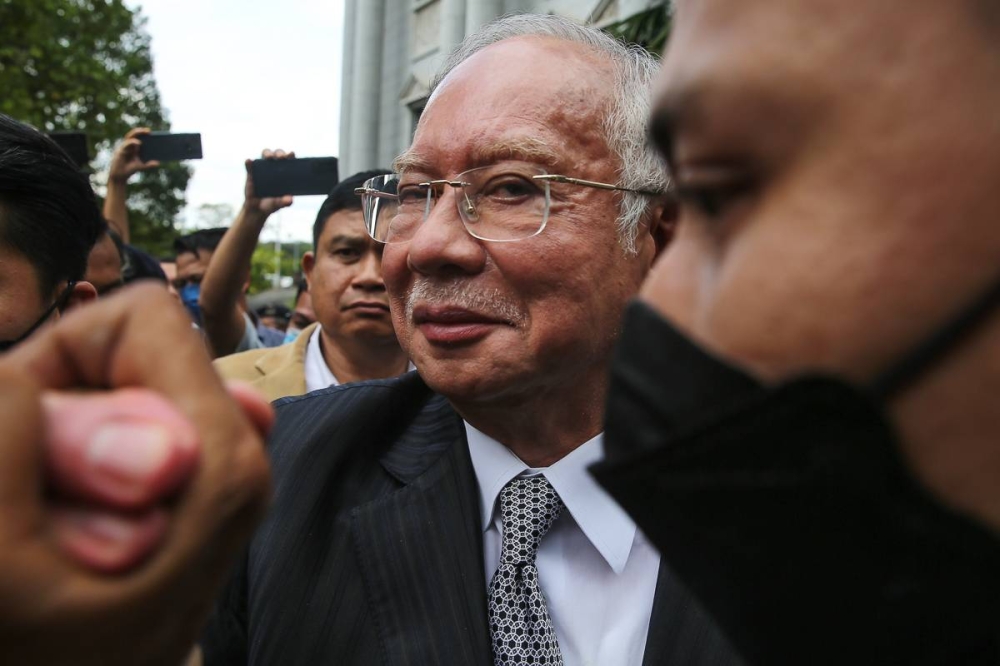AUGUST 27 — Former prime minister Datuk Seri Najib Razak has two options before him now, one of which is to file an application for the Federal Court to review its own decision.
This comes under an exercise of the apex court’s inherent power via Rule 137 of the Rules of the Federal Court 1995. When can the rule be resorted to? The short answer is that “it may be resorted to only in cases where a procedural injustice has been occasioned.” (per Gopal Sri Ram JCA (as he then was) in Badan Peguam Negara v Kerajaan Malaysia [2009]) One must add that the cases are limited or exceptional.
It must also be reminded that a review under Rule 137 “should not bear any semblance to judicial review” in the strict sense of Order 53 of the Rules Court 2012. (See the judgment of Heliliah FCJ in Dato’ Seri Anwar bin Ibrahim v Public Prosecutor [2011]) A judicial review is a court proceeding where a challenge is made on the decision of the relevant authority or entity by challenging the lawfulness of the decision-making process. (See Ketua Pengarah Hasil Dalam Negeri v Alcatel — Lucent Malaysia Sdn Bhd & Anor [2017])
As for the exceptional cases, President of the Court of Appeal Zaki Tun Azmi (as he then was) in the Federal Court case of Asean Security Paper Mills Sdn Bhd v Mitsui Sumitomo Insurance (Malaysia) Bhd [2008] had lucidly identified the so-called broad categories permitting review as follow:
(a) That there was a lack of quorum, for example the court was not duly constituted as two of the three presiding judges had retired (Chia Yan Tek & Anor v Ng Swee Kiat & Anor [2001]).
(b) The applicant had been denied the right to have his appeal heard on merits by the appellate court (Megat Najmuddin bin Dato Seri (Dr) Megat Khas v Bank Bumiputra (M) Bhd [2002]).
(centre) Where the decision had been obtained by fraud or suppression of material evidence (MGG Pillai v Tan Sri Dato’ Vincent Tan Chee Yioun [2002]).
(d) Where the court making the decision was not properly constituted, was illegal or was lacking jurisdiction, but the lack of jurisdiction is not confined to the standing of the quorum that rendered the impugned decision (Allied Capital Sdn Bhd v Mohd Latiff bin Shah Mohd, & another application [2004]).
(e) Clear infringement of the law (Adorna Properties Sdn Bhd v Kobchai Sosothikul [2005]).
(f) It does not apply where the findings of this court are questioned, whether in law or on the facts (since these are matters of opinion which this court may disagree with its earlier panel) (Chan Yock Cher v Chan Teong Peng [2005]).
(g) Where an applicant under Rule 137 has not been heard by the court and yet through no fault of his, an order was inadvertently made as if he had been heard (Indian case of Raja Prithwi Chand Lal Choudhury v Sukhraj Rai [1941]).
(h) Where bias had been established (English case of Taylor & Anor v Lawrence & Anor [2002]).
(i) Where it is demonstrated that the integrity of its earlier decision had been critically undermined, for example where the process had been corrupted and a wrong result might have been arrived at (English case of Re Uddin (a child) (serious injury: standard of proof) [2005]).
(j) Where the Federal Court allows an appeal which should have been consequentially dismissed because it accepted the concurrent findings of the High Court and Court of Appeal (Joceline Tan Poh Choo & Ors v V Muthusamy [2007]).
The Asean Security case was referred to by the Federal Court recently in the case of Golden Star & Ors v Ling Peek Hoe & Ors [2021] when the apex court took time to discuss two applications for review under Rule 137 (three applications in fact, the first having been withdrawn). Federal Court Judge Hasnah Hashim, delivering the judgment of the Court, said:
“Under Rule 137 the Federal Court has the inherent power to review its own decision but this is exercised only in rare and exceptional circumstances. In order to succeed ... it must be shown that not only does the case fall within the stringent criteria as set out in Asean Security case but the error must be so obvious that there was injustice to the party.”
If one were to go through all these cases cited in the Asean Security case, the injustice could clearly be seen even before going into the merits of each case. Review under Rule 137 cannot apply where a decision of the Federal Court is only questioned, whether in law or on the facts of the case.
Where an applicant had exhausted his legal remedies, the Federal Court has, on the many occasions as mentioned above, expressed its view that there must be finality to deciding any dispute and it cannot be reviewed ad infinitum.

It is therefore concerning that there has been a growing number of applications for review under Rule 137 over the years. This is exemplified as recently as in 2020 in the case of Yong Tshu Khin & Anor V Dahan Cipta Sdn Bhd & Anor and Other Appeals where there were seven review applications requesting the Federal Court to review and set aside the decisions made by other panels of the apex court in the appeals between the respective parties in the seven cases.
The seven applications were heard together, following which the Federal Court delivered a single judgement.
The avenue for review under Rule 137 should not be abused. It should be resorted to only in cases where a procedural injustice has been occasioned.
* This is the personal opinion of the writer or publication and does not necessarily represent the views of Malay Mail.





















